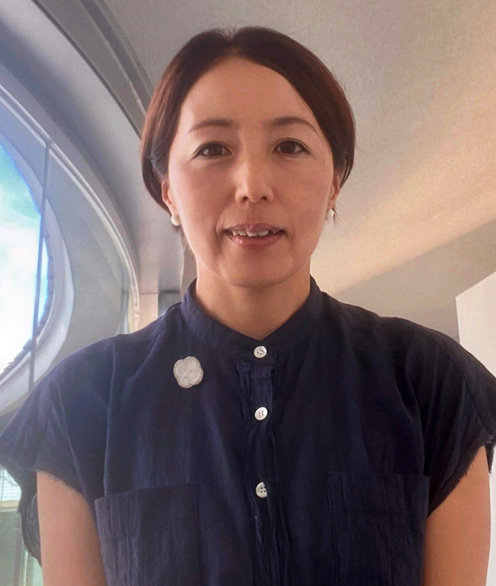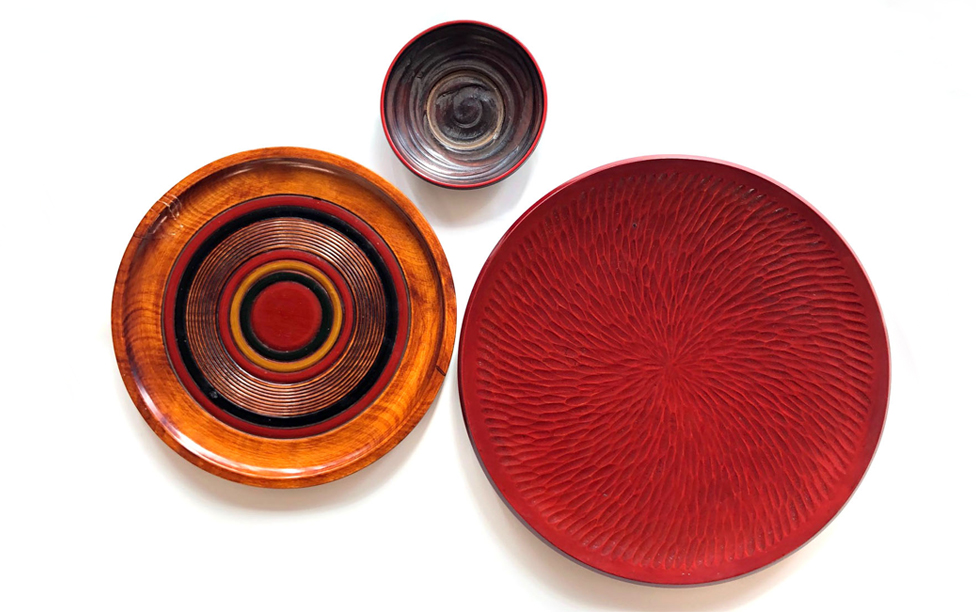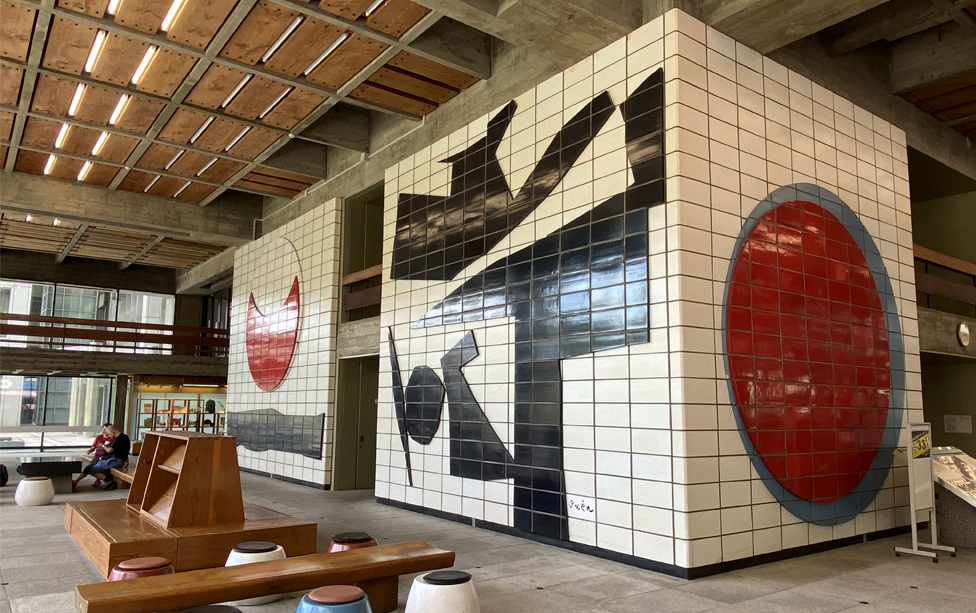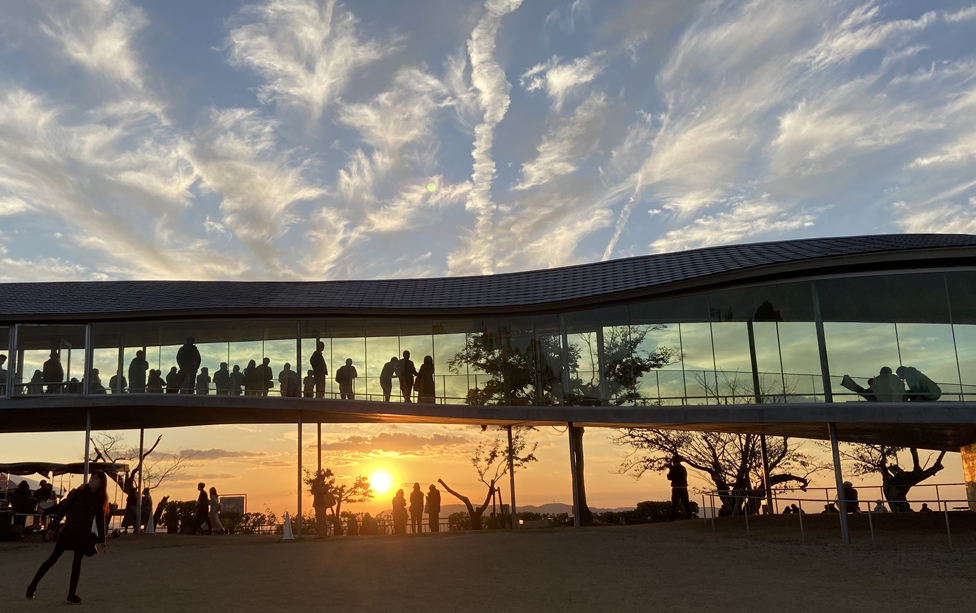Relay Talk
CHUJO Akiko (The Facility Director, Yashimāru, the Yashima Mountaintop Facility)

Why are there so many beautiful things in Kagawa?
Born in Nishinomiya City, Hyogo, I have lived in Takamatsu for 26 years. When I first came here, the Takamatsu Station was under relocation because of the development of Sunport area, and I remember that I felt sad to find myself in a backcountry.
 Kagawa lacquerware
Kagawa lacquerware
However, that impression has gradually changed. In the first place, I fell in love with the calm Seto Inland Sea, the symbolic Mt. Yashima, and the beauty of sunset seen from the waterfront. Besides, I noticed many beautiful things in the everyday life. Lacquer trays and dinnerware, bridal dolls and uchiwa fans, and other craftwork can be found in any home; shopping streets offer refined cafes; there is modernistic architecture like Kagawa Prefectural Government Office and public art; a short walk brings you to the Ritsurin Garden (a feudal lord garden) where the Commerce and Industry Promotion Hall and Sanuki Folk Craft Museum present old and new good design. The old and the new coexist in harmony; beautiful things tinged with local color have gradually become the food for my heart.
 Ceramic Mural “Wakei Seijaku*” in the lobby of
Ceramic Mural “Wakei Seijaku*” in the lobby of
Kagawa Prefectural Government Office East Building
*Wakei Seijaku (the four most important elements of a
tea ceremony: harmony, respect, purity and tranquility)
Now, why have so many beautiful things emerged in the smallest Japanese prefecture?
One reason is Sanuki urushi lacquerware and establishment of the Kagawa Prefectural Kogei School (presently, Kagawa Prefectural Takamatsu Kogei High School). Kaijiro Notomi, the first president of the Kogei School, was a man of cosmopolitan mind so proficient in craftsmanship that he was dispatched to the Vienna EXPO; he invited top teachers from the Tokyo Fine Arts School to Takamatsu, and launched vocational education for mass production of lacquerware and other craft products. However, fascinated by the teachers, more and more students aimed to be artists, and eventually the school produced leaders of Japan’s craft world. (This explains why even the mass-produced lacquerware is so good quality).
One reason is Sanuki urushi lacquerware and establishment of the Kagawa Prefectural Kogei School (presently, Kagawa Prefectural Takamatsu Kogei High School). Kaijiro Notomi, the first president of the Kogei School, was a man of cosmopolitan mind so proficient in craftsmanship that he was dispatched to the Vienna EXPO; he invited top teachers from the Tokyo Fine Arts School to Takamatsu, and launched vocational education for mass production of lacquerware and other craft products. However, fascinated by the teachers, more and more students aimed to be artists, and eventually the school produced leaders of Japan’s craft world. (This explains why even the mass-produced lacquerware is so good quality).
 Sunset view from Yashimāru
Sunset view from Yashimāru
I was surprised to know that when Takamatsu was devastated by the war, graduates of the Kogei School launched a campaign to build an Art Museum. They sought advice from Genichiro Inokuma who lived then in Tokyo, raised money among citizens, and enlisted the then Takamatsu Mayor Teruta Kunito and other politicians; as a result, Takamatsu Art Museum was completed in 1948. Kagawa Prefectural Art Exhibition was opened here to draw much attention as the first post-war public art museum. (Isn’t it an ample proof of the citizens’ high cultural standards?)
I also appreciated the great role of Masanori Kaneko who became Kagawa Governor five years after the war and who was called the “Design Governor.” He entrusted Kenzo Tange to build Kagawa Prefectural Government Office as a memorial to the prefecture residents, invited Isamu Noguchi and Masayuki Nagare to Kagawa; moreover, he inspired new products by adding new design to traditional craftsmanship in Design Research Institute and Sanuki Folk Craft Museum. Nowadays, products developed jointly by artists and artisans are sold as prefecture specialties even overseas; some works are now permanent exhibits at the Museum of Modern Art (MoMA) in New York. (Was it the way to prepare the groundwork for Setouchi Triennale?)
What I said above is just a small part of it. While unraveling “Why are there so many beautiful things in Kagawa?”, I felt even more proud to live in Takamatsu, Kagawa. At the thought that today’s Takamatsu has been created by our ancestors’ love for their homeland, I feel a special beauty of the city and Seto Inland Sea seen from the Yashima mountaintop.
On the occasion of the G7 Sustainable Urban Development Ministers' Meeting in Takamatsu, Kagawa, let us think of sustainable urban development to make the citizens feel proud, and pass the city to our children.
What I said above is just a small part of it. While unraveling “Why are there so many beautiful things in Kagawa?”, I felt even more proud to live in Takamatsu, Kagawa. At the thought that today’s Takamatsu has been created by our ancestors’ love for their homeland, I feel a special beauty of the city and Seto Inland Sea seen from the Yashima mountaintop.
On the occasion of the G7 Sustainable Urban Development Ministers' Meeting in Takamatsu, Kagawa, let us think of sustainable urban development to make the citizens feel proud, and pass the city to our children.


